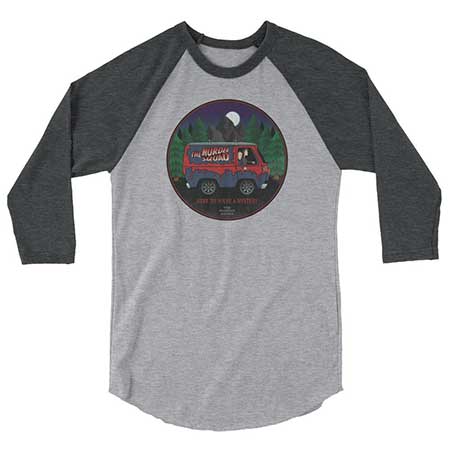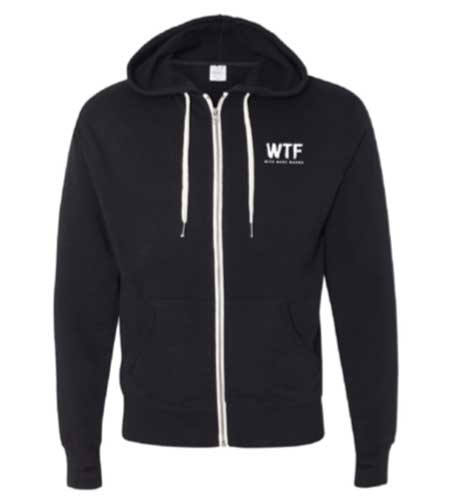January 05, 2021
5 Ideas for Targeting Booming Podcast Market
The popularity of branded merchandise from podcasts is soaring. Promo products distributors should act now to capitalize.
Sell things you can readily provide to people who have a want and need for the products – and the ability to purchase them.
At its most simplistic, that’s the root of every successful business venture. And with that in mind, promotional products distributors should start targeting the podcast market immediately.

Why? Because the popularity of podcasts is soaring and podcasters are turning to branded merchandise like never before to monetize that boom in interest, promote their brands and create deeper, tangible connections with listeners.
Don’t believe me? Then this excellent article from The Wall Street Journal might convince you.
When I started working on this piece my thesis was that podcasts are replacing bands. By the end, I was more convinced that (some) podcasts are trying to become lifestyle brands https://t.co/MQspEVwLfU @WSJLife
— Jacob Gallagher (@jacobwgallagher) January 4, 2021
The WSJ piece is absolutely worth a read in its entirety. But here’s one of the topline takeaways: “The podcast merch business … is soaring, as more listeners want to show their allegiance to their podcast of choice through a T-shirt, mug or hoodie,” writes WSJ journalist Jacob Gallagher. Boy is that ever music to the ears of promo products professionals!
As one example proving the intensifying desire for podcast merch, Gallagher cites Marisa Morales, head of merchandising at Stitcher, a media company that specializes in creating, distributing and monetizing podcasts. Morales says merchandise sales associated with certain Sticher podcasts like “WTF with Marc Maron” and “Sklarbro Country” have been doubling (or thereabouts) every year.
Morales “likened the excitement surrounding, say, a newly launched mug from ‘The Office Ladies,’ a podcast about the bygone sitcom, to the frenetic hype around the release of Air Jordan sneakers. Hundreds of coffee cups can sell out in hours,” Gallagher reported. Not surprisingly, providers are already jumping in to meet the need for podcast-branded promo products. Stitcher, for instance, has PodSwag, which retails merch from its stable of podcasts. Items include everything from apparel, drinkware and accessories to posters, stickers, decals and books.

This raglan sleeve T-shirt for the podcast “Jensen & Holes: The Murder Squad” was available on PodSwag.
Still, there’s opportunity for promo distributors in this nascent merch market. Here are five strategies for capitalizing.
1. Identify podcasters you’d like to work with: Sure, it would great to garner “The Joe Rogan Experience,” with its audience of millions, as a client. And who knows, maybe you can. Still, you don’t have to boat the biggest fish to have success in the podcast market. What podcasts do you already listen to? Do they have swag? If they do, how could you improve what they offer? Answer those questions and then perform the networking legwork to connect with those podcasters. Similarly, what are your interests? What podcasts intersect with those? Identify such pods and start forming relationships; you’ll have the advantage of common ground and thus “speak the same language.”
2. Understand the brand: As Gallagher points out, podcasts are increasingly acting as brands. It’s important, then, to listen at length to podcasts you’re looking to partner with, as well as to analyze other social media platforms upon which they might be active. This will give you a feel for the tone of the podcast’s brand – how the podcasters position themselves to audiences. With that knowledge, you can act as a true marketing partner by helping podcast clients develop graphics and messaging that deftly conveys the brand’s vibe – something that will ultimately help the merch resonate well with end-users, thereby driving sales and creating stronger community between the podcasters and their listeners.
3. Have the requisite tech capabilities: Ensure you have the ability to provide web stores/e-commerce solutions that allow listeners to purchase online easily. Without the proper tech and fulfillment, it will be difficult to succeed in servicing this market.
4. Think higher-end: Hooded sweatshirts for podcasts on PodSwag were retailing for between $40 and $60. T-shirts were mostly $25 and up. Those price tags, combined with the fact of growing podcast merch sales, tells you that audiences are willing to shell out some dollars to show their support of and affiliation with podcasts they love. So, don’t be shy about pitching superior items that cost more – name brands and fashion-forward high-quality private label products from trusted promo industry suppliers. The appetite for such items is there, and at the retail price, it’s important to deliver true quality.

This French terry heathered hooded sweatshirt for the podcast “WTF with Marc Maron” was retailing for $52 on PodSwag.
5. Provide custom products: Built-from-scratch products could hold interest for some podcasters, especially larger ones with the wherewithal to invest in such items and even smaller pods that have highly devoted niche audiences keen for quirky items that exude the essence of the brand. Consider, then, suggesting custom products. An example: A custom-shaped and decorated glass hand pipe for a pod that focuses on the business and culture of the cannabis industry.
For custom products, a prudent strategy for many promo distributors is to work with a U.S.-based industry-listed supplier that has extensively vetted the primarily overseas manufacturing partners that will build the items. This helps ensure quality and that the items are made by workers laboring in humane conditions.
Of course, there’s more you can do to penetrate the podcast market, but these strategies should certainly help. Don’t hesitate to put them into play. The time to capitalize on this market is now. Given the sales challenges posed by the COVID-19 pandemic, it should be a breath of fresh air to have a growing niche – one that doesn’t rely on in-person events – be so eager for promo products.